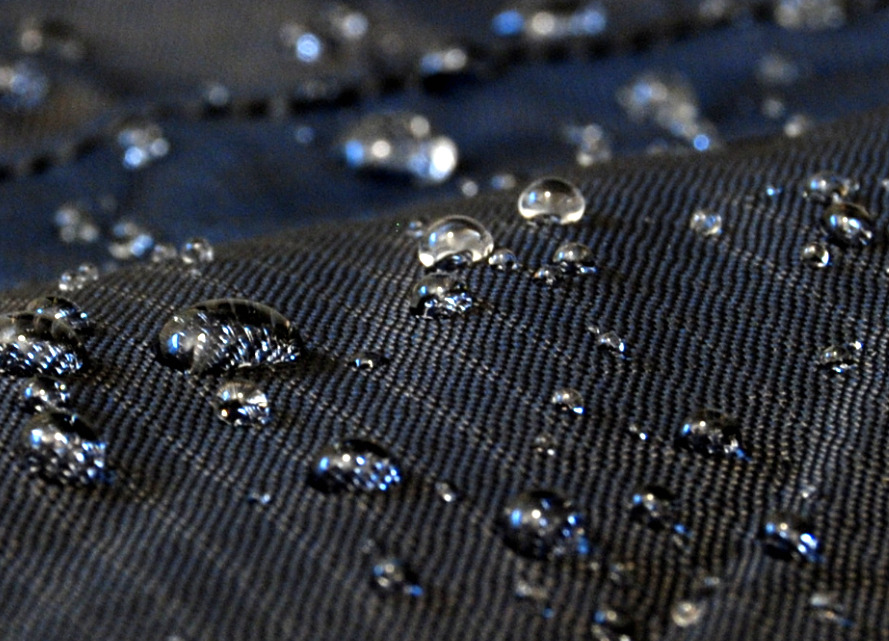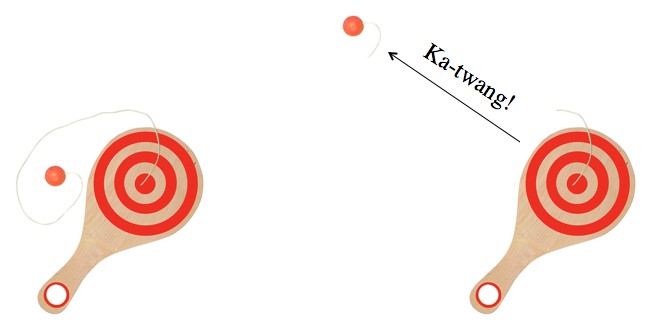Physicist: Surface tension.
There are a lot of details and phancy physics behind surface tension, but the main idea behind surface tension comes from what separates liquids from gases. Small things (like individual molecules) have a tendency to stick to each other. Electrical forces, like dipole attraction or van der waals forces, completely dominate the world of the small. The individual molecules in a liquid are attracted to each other, and try to stay as close as possible. In a gas the molecules have so much kinetic energy that they ricochet off of each other and fly apart. In a liquid the attractive forces are large enough to keep that kinetic energy reeled in.
Water has surprisingly strong “inter-molecular” forces, due to it’s highly polar nature. Each water molecule is like a bar magnet, only with positive and negative charges instead of north and south magnetic poles.
The fact that all of the atoms in a fluid are attracted to their nearest neighbors means that, for the most part, fluids “don’t like” having surfaces. Each molecule wants to be surrounded by other molecules, so the surface literally contracts and tries to be as small as possible. So surface tension is just the liquid trying to have the minimum possible surface area. Water does this more than most liquids in nature.

On very small scales (insect size) surface tension is the dominating property of water. For example, if you see a water droplet sitting on a surface, then the surface tension is greater than the water’s weight.
A really good way to minimize the surface area is to be flat. Insects that walk on water have hydrophobic oils on their feet that don’t mix with water, so the water instead has to move out of the way. But dips aren’t flat, so creating dips means creating more surface, which the water doesn’t want to do, so it pushes back. A water strider doesn’t float on water, it is literally supported by the stubbornness of the water’s surface.
But this doesn’t amount a lot of force. Insects, dirt, and even paperclips can be suspended by surface tension, but not much else. On a large scale the weight of the water, as well as the weight of critters trying to walk on it, is much greater than the surface tension is strong.
There are very few largish creatures that can walk on water. However, they don’t use surface tension, they hydroplane. “Hydroplaning” here means pushing on the water faster than the water can move out of the way. The best way to hydroplane is to be a paradox: a fast runner with gigantic feet. No person has been able to pull it off, but happily those paradoxes do exist in nature and they’re ridiculous.









Humans could indeed walk on water, if they (and the water) were on the moon.
I wish I could walk on water.
Guys, You can’t walk on water, But you can walk on custard because there is more molecules thus you can walk on it.
Walking on water is at times used as an example of an impossible task. But nothing is impossible by our Famous English Magician “Dynamo”, On 25 June 2011 Dynamo reportedly walked across the Thames River.
google it…
Freeze it to a sufficient depth and then you can walk on water all you want.
“Humans could indeed walk on water, if they (and the water) were on the moon.”
I don’t think that is true. It would take a far greater reduction in gravity to allow that. We could fly though (with artificial wings), assuming there was sufficient air pressure.
I always walk on water. Just pour some on da floor and walk over it.
That is how you get a Harvard Scholarship
Pingback: How Do Jesus Bugs Perform Their Miraculous Water-Walking Feat?